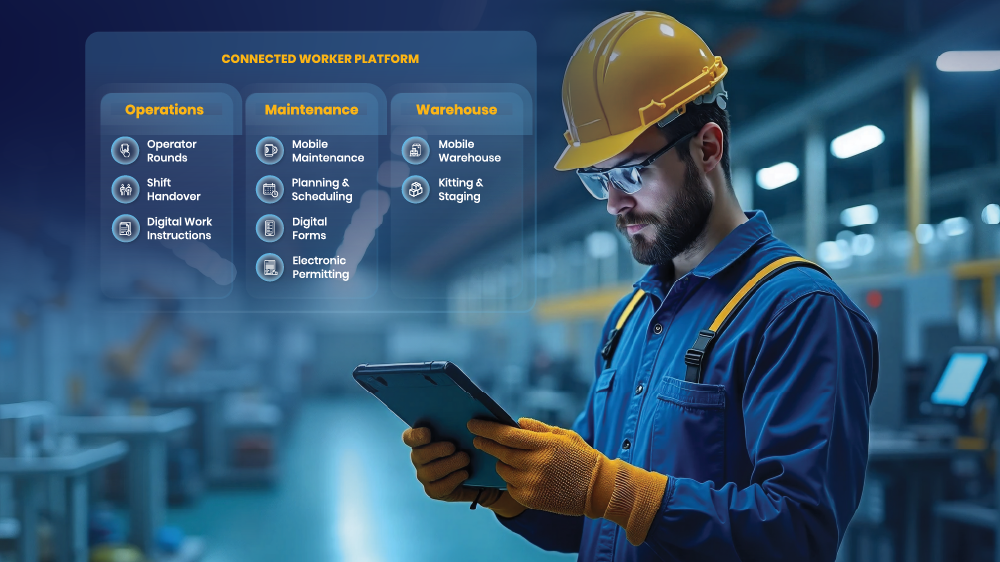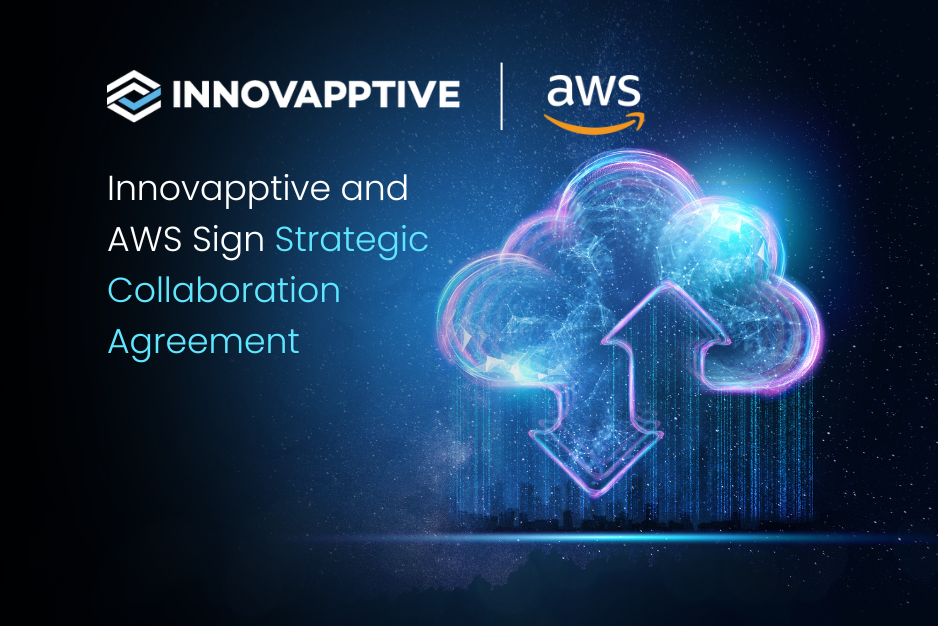Connected Worker Platforms Address 5 Key Utilities Management Challenges

Utilities face five tough obstacles to deliver consistent customer service while remaining competitive. Connected worker platforms offer an effective way to overcome these utility industry challenges through greater visibility, agility and flexibility in the maintenance shop and the warehouse.
The utility industry is at the center of a paradigm shift. The growing proliferation of electric vehicles demands more electricity. Increased competition and changing consumer behavior demand lower prices. Utilities directly touch the lives and livelihoods of people. Disruptions in utilities create ripples across many other industries. Let’s discuss some key challenges this industry is facing. We’ll also explore how connected worker platforms can help overcome these utilities management challenges and stay competitive in 2022.
#1 Building resilience: Utilities are more vulnerable than any other asset-intensive industry to natural disasters. But, they have no power to prevent them. They’re the first to take the blow when a hurricane or an earthquake hits. For example, Hurricane Irma left more than 60% of Florida’s population without power in 2017. Such natural calamities cause a $20 to $55 billion loss for utilities every year.
Resilience is anything but a choice for utilities. Unfortunately, natural disasters have increased tenfold over the last 60 years and it’s only getting worse. Utilities should enhance resilience to stay competitive in the face of catastrophic natural disasters.
#2 Complex power grids: Distributed energy brought a new actor - the prosumer - into play. Prosumers are electricity consumers (individual households and organizations) who produce renewable energy for their own needs and sell excess power back to the grid. This trend is rapidly expanding across the globe. Distributed energy resources (DER) in the U.S. will generate 387GW by 2025. A Guidehouse survey reports that almost two-thirds of industry insiders believe that the proliferation of DER is a disruption to the conventional business model.
Thousands of new distributed energy generators are connected to the grid every year, making it more complex. Utility companies now handle 10 times more assets than they did 20 years ago. This number will only go north in 2022. Utilities need to train their technicians extensively to ensure grid stability.
#3 Aging equipment: Most utility assets are old. A University of Texas study reported that power generation assets currently average 30 years of age. They get older with another passing year. Replacing these old assets is a costly affair. Utilities may not replace all these assets. However, they can adopt operational technologies to enhance their performance.
#4 Widening skills gap: Frontline workers are the heart of utility systems. The faster and more efficient they are, the better customer service they can deliver. Many utility industry frontline workers are nearing retirement. Utilities will need to replace or retrain a large segment of their workforce over the next decade to bridge the skills gap created by the Great Crew Change.
#5 Increasing operating costs: The utility sector is under constant cost pressure. Several factors, including weather and regulations, influence costs and prices in the industry. For example, sufficient rains provide enough resources for power generation and water consumption. This decreases costs. If there’s a drought, water scarcity will hurt utilities. Natural disasters, complex networks and outdated equipment increase maintenance costs for utilities. Increasing prices may not be the panacea for utilities. They need to find ways to reduce costs while enhancing performance, resilience and productivity.
An Opportunity for Utilities Management with Connected Worker
All the challenges discussed above could be tied back to inefficient frontline operations. Utilities have widely adopted digital technologies. However, frontline workers are still unconnected. Harvard University reports that almost half of utilities want to improve their frontline worker decision-making through real-time data. Connected worker platforms help companies to achieve this.
Visibility into assets and their health help frontline workers make informed decisions on the field. However, manual data capturing and distribution created hidden gaps in the ecosystem. They facilitate ghost assets, which lead to inaccurate financial reporting. Companies lose tribal knowledge. Young technicians don’t get proper training in handling complex systems. Poor coordination due to the data silos between maintenance and warehouse teams increases inventory carrying costs.
Connected worker platforms, a new wave of digital transformation in the fourth industrial revolution, help utilities integrate ERP systems into their frontline operations. They will help companies address the challenges by:
- Boosting resilience through real-time access to critical data and expediting work order execution
- Improving asset performance through complete visibility into health asset data, which will help better planning and scheduling for a proactive maintenance approach
- Reducing turnaround time and enhancing customer satisfaction
- Eliminating ghost assets and reducing inventory carrying costs, bringing down operational costs
Learn more about reinventing frontline operations with connected worker platforms here.
Curious About Connected Worker Platforms? We Can Help
Innovapptive offers a best-in-class Connected Worker platform to help utilities advance their digital transformation initiatives. Request a live demo of our Connected Worker platform or call 844-464-6668 to talk to our utility industry experts.

See It In Action
Schedule a personalized demo to see how our solutions can help your business thrive.
- 29-09-2025
Your Ultimate Guide to Connected Worker
In the rapidly evolving industrial landscape, maximizing plant efficiency and ensuring optimal...
- 20-08-2025
Building the future of Industrial Operations with Innovapptive and AWS
Most manufacturers have already gone digital. Yet business outcomes haven’t moved in step. Many...
- 22-04-2025
The $3.6B Unlock: Solving the Chemical Industry’s Labor Crisis and EBITDA Pressure in One Move
“Constraints don’t slow innovation—they force it.”


